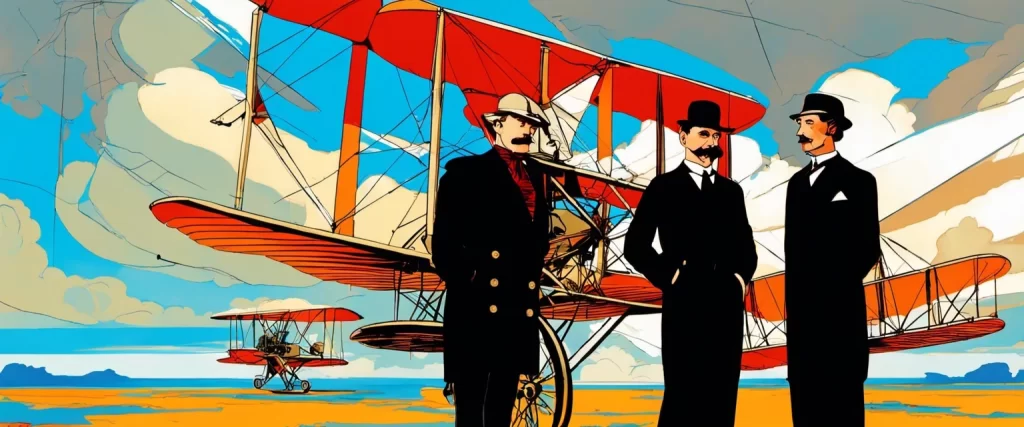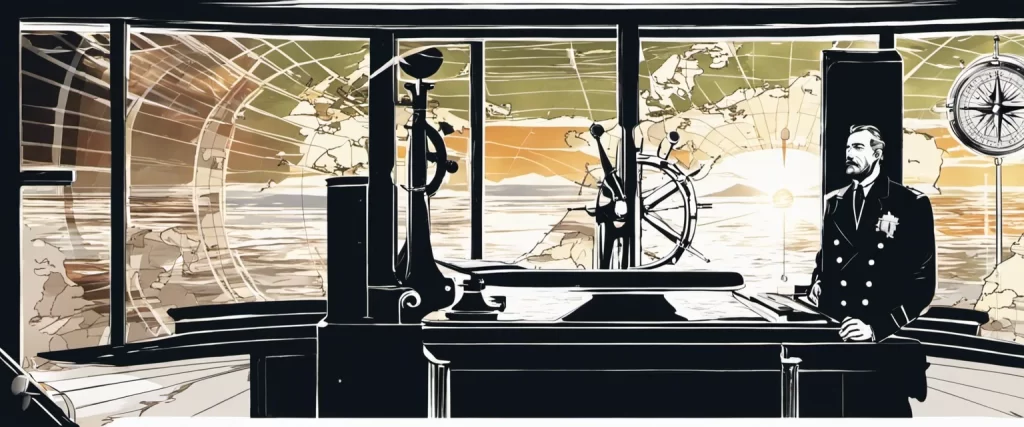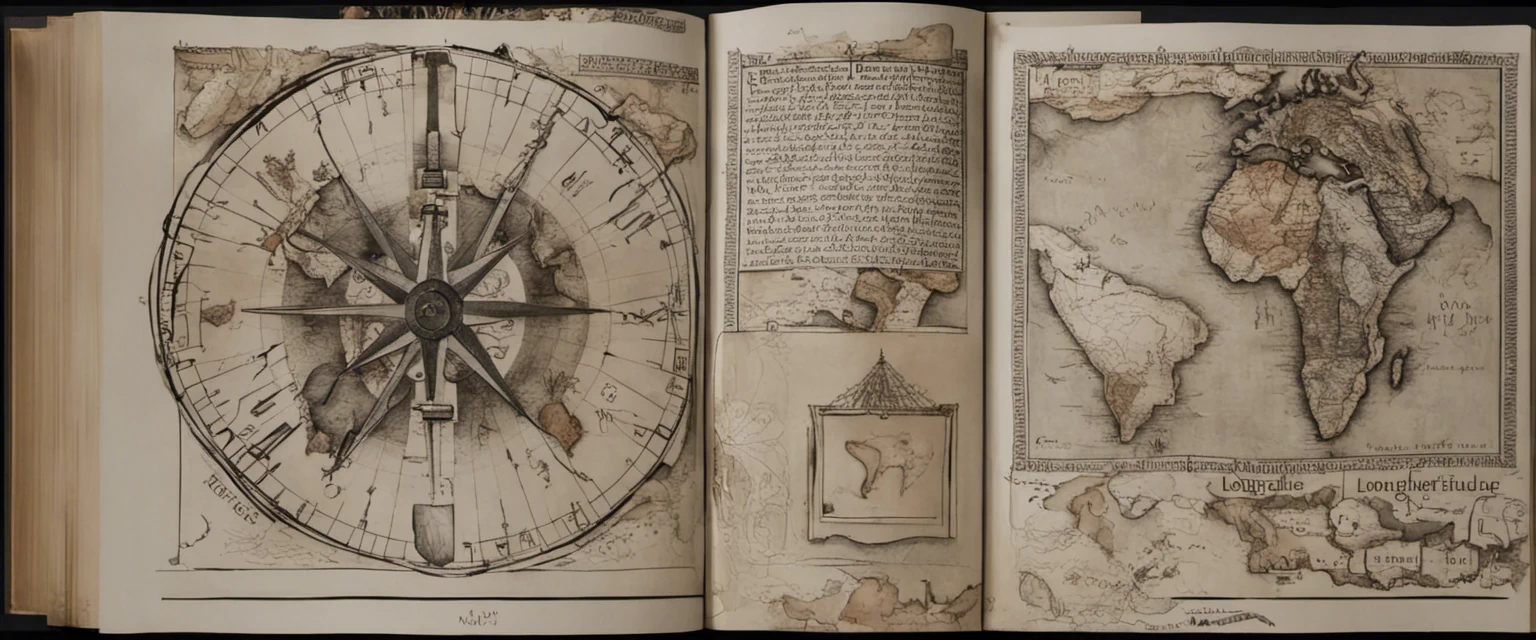—Longitude & The Wright Brothers
In the vast realm of human achievement, historical events and notable figures have played a pivotal role in shaping the course of civilization. Two such figures, whose relentless pursuits and groundbreaking contributions have left an indelible mark on history, are John Harrison and Orville and Wilbur Wright. Atmospheric exploration and the measurement of time are seemingly unrelated concepts, yet they converge in two influential books: “Longitude” by Dava Sobel and “The Wright Brothers” by David McCullough. In this comparative study, we delve into the realms of these captivating narratives to explore the striking parallels and diverging paths of these two captivating stories.
Written with meticulous attention to detail and a passion for historical accuracy, “Longitude” takes us on a captivating journey through the life and work of John Harrison, an unsung hero whose revolutionary timekeeping device forever altered the way humans navigate the vast oceans. In her narrative, Sobel paints an intimate portrait of Harrison’s struggle against the scientific establishment, as he strives to solve the seemingly insurmountable problem of determining longitude at sea. From his humble beginnings as a carpenter’s apprentice to his relentless pursuit of an accurate timepiece, Harrison’s story is one of resilience, perseverance, and unyielding determination.
In stark contrast, “The Wright Brothers” transports us to the skies and plunges us into the daring exploits of Orville and Wilbur Wright, brothers whose audacious dreams of flight transformed the world. McCullough’s eloquent prose vividly describes the brothers’ insatiable curiosity, captivating the reader with tales of their early days as bicycle mechanics and their relentless pursuit of the impossible. With meticulous attention to detail, McCullough chronicles the Wright brothers’ relentless dedication to overcoming countless obstacles, earning them their rightful place in history as the pioneers of aviation.
While these two books may focus on completely different subjects, a closer examination reveals striking similarities in themes, personal sacrifices, and the sheer audacity of their respective protagonists. Both Harrison and the Wright brothers dedicated their lives to solving complex problems and pushing the boundaries of what was thought possible. They faced immense challenges and opposition from their contemporaries, yet their unwavering determination propelled them forward against all odds.
By embarking on this comparative study, we seek to uncover the common threads that weave through the narratives of these two remarkable accounts. As we delve deeper into the lives of John Harrison and the Wright brothers, we hope to shed light on the timeless qualities that drive human innovation and the unyielding spirit of those who refuse to accept the limitations of their time. Through the remarkable stories presented in “Longitude” and “The Wright Brothers,” we embark on a journey that transcends eras, inspiring us to question the boundaries of our own potential and rethink the impossible.
Brief Summary of Two Books
Longitude by Dava Sobel
Longitude” by Dava Sobel is a non-fiction book that tells the captivating story of John Harrison, an 18th-century English clockmaker who invented a timepiece that solved the longstanding problem of determining longitude at sea. The book highlights the historical context and challenges faced by sailors trying to navigate accurately on long ocean voyages. Sobel explores the scientific and political efforts to solve this problem, following Harrison’s tireless dedication to building an accurate marine chronometer. Through his invention, Harrison revolutionized navigation, ultimately saving countless lives and enabling explorers to traverse the world with confidence and accuracy. Sobel’s book sheds light on an often-overlooked figure and the immense impact of his achievement, blending history, science, and adventure into a compelling narrative.
The Wright Brothers by David McCullough
“The Wright Brothers” by David McCullough is a captivating biography that explores the lives and achievements of Orville and Wilbur Wright. The book delves into the brothers’ childhood, their fascination with flight, and their relentless pursuit to invent and perfect the world’s first successful airplane. McCullough presents a detailed account of the challenges they faced and the adversities they overcame in their quest for flight, including financial struggles and skepticism from the scientific community. The biography also highlights their determination, meticulousness, and unwavering belief in themselves, ultimately leading to their historic flight at Kitty Hawk in 1903. McCullough’s work not only unveils the remarkable story of the Wright brothers, but also sheds light on the profound impact their invention had on the world, opening up new possibilities in aviation and forever changing the course of history.
Comparison between Two Books

Similarities in longitude
Both “Longitude” by Dava Sobel and “The Wright Brothers” by David McCullough touch upon the concept of longitude, albeit in different contexts.
In “Longitude,” Sobel explores the historical quest to accurately determine a ship’s longitude at sea. She focuses on the 18th-century English clockmaker, John Harrison, who developed a revolutionary marine chronometer to solve the problem. Sobel delves into the scientific and societal significance of longitude, highlighting the challenges faced by navigators and the subsequent impact on maritime trade and exploration.
On the other hand, in “The Wright Brothers,” McCullough provides a biographical account of the Wright brothers, pioneers of aviation. While the story primarily revolves around their achievements in building and flying the first successful airplane, it also touches upon the challenges they encountered, including navigation. The Wright brothers had to develop their own navigation methods, taking into consideration factors like wind and drift, which required an understanding of both latitude and longitude.
Despite their differing primary focuses, there are several similarities between the two books regarding the concept of longitude:
1. Historical Significance: Both books highlight the historical importance of accurately determining longitude. Sobel emphasizes how it affected maritime navigation and international trade, while McCullough includes it as part of the multi-faceted challenge faced by the Wright brothers in their quest for flight.
2. Technological Innovation: In both narratives, the authors showcase innovative solutions devised to address the longitude problem. Sobel’s “Longitude” centralizes on John Harrison’s groundbreaking marine chronometer, while in “The Wright Brothers,” the aviation pioneers implemented their own methods to account for longitude in their aircraft’s navigation controls.
3. Scientific and Mathematical Challenges: Both books acknowledge the complex scientific and mathematical calculations required to determine longitude accurately. Sobel explains the difficulties faced by navigators relying on celestial observations and mathematical calculations, emphasizing the precision needed. Similarly, McCullough touches upon the complexities the Wright brothers encountered in determining their plane’s position and navigation in the absence of a proven system.
4. Impact on Exploration and Trade: Longitude’s accurate determination had great implications for exploration and trade. Sobel details how the ability to know a ship’s position with certainty led to increased safety, navigation efficiency, and the ability to reach new trade routes. McCullough also notes how the Wright brothers’ advancements in aviation, which encompassed navigational challenges, eventually transformed global transportation and exploration.
In summary, both “Longitude” and “The Wright Brothers” shed light on the significance of longitude in different contexts. They emphasize the historical, technological, and mathematical challenges associated with determining accurate longitude, as well as the broader impact on exploration and trade.
Divergences in longitude
Longitude by Dava Sobel and The Wright Brothers by David McCullough are both historical non-fiction books that delve into significant advancements in navigation and aviation, respectively. While Longitude focuses on the quest for an accurate method of determining longitude at sea, The Wright Brothers chronicles the invention and development of the airplane.
One key divergence between the two books lies in their subject matter and scope. Longitude primarily delves into the historical and scientific aspects of solving the longitude problem, exploring the various attempts and the ultimate success of John Harrison’s marine chronometer. On the other hand, The Wright Brothers delves into the personal lives, trials, and triumphs of Orville and Wilbur Wright as they persistently worked towards achieving manned flight.
Another divergence between the two books is their focus on different time periods. Longitude primarily focuses on the 18th century, where the longitude problem was a matter of urgent importance for maritime nations seeking to avoid shipwrecks and accurately navigate the seas. Meanwhile, The Wright Brothers is set in the late 19th century and early 20th century, capturing the dawn of aviation and the determined efforts of the Wright brothers to conquer the skies.
Additionally, the method of storytelling varies between the two books. Longitude presents a concise and engaging narrative, with a particular focus on the scientific breakthroughs and the individuals involved in solving the longitude problem. It provides a historical context and educates readers about the significance of accurate longitude measurement. Conversely, The Wright Brothers offers a more detailed and intimate portrait of the Wright brothers themselves, examining their personal lives, their persistence, and the challenges they faced. It provides a deeper insight into the inventors’ motivations and their journey towards achieving their dream.
In conclusion, while both Longitude and The Wright Brothers explore significant advancements in navigation and aviation respectively, they differ in terms of subject matter, time period, and storytelling approach. Longitude primarily focuses on the historical and scientific aspects of solving the longitude problem, while The Wright Brothers delves into the personal lives and achievements of the Wright brothers. Despite their divergences, both books offer valuable insights into the human drive for innovation, perseverance, and the impact of these groundbreaking advancements on our world.

Conclusion
Both Longitude by Dava Sobel and The Wright Brothers by David McCullough are highly regarded books that have received critical acclaim. The decision of which book is more worthy of reading ultimately depends on personal preferences and interests.
Longitude by Dava Sobel is a non-fiction book that tells the fascinating story of the quest to solve the problem of determining longitude at sea. It focuses on the struggles of John Harrison, an 18th-century clockmaker, and his invention of the marine chronometer. Sobel’s book not only sheds light on the scientific and technological advancements of the time but also explores the social and political challenges faced by Harrison. Longitude is praised for its engaging storytelling that brings the history of navigation and exploration to life.
On the other hand, The Wright Brothers by David McCullough is a biography that delves into the lives and accomplishments of Orville and Wilbur Wright, the pioneers of aviation. McCullough extensively researched their personal writings, family records, and other documents to provide a comprehensive account of their journey from bicycle shop owners to inventors of the first successful airplane. The book not only portrays the technical challenges faced by the Wright brothers but also explores their determination, perseverance, and the impact of their achievement on society.
If you are interested in scientific discoveries, exploration, and history, Longitude may be the more appealing choice. However, if you have a fascination with aviation, inventions, and the lives of remarkable individuals, The Wright Brothers could be the better option. Both books offer captivating narratives and present significant events in history, so you can’t go wrong with either choice.



